Bear River Migratory Bird Refuge in northern Utah, part of the National Wildlife Refuge system, has been closed since the first of June and reopened this week. I made the trip up there this morning, not expecting to see much because reports were that there were few birds and I expected the birds to be nervous after not being exposed to many people or vehicular traffic for three months.
Birds were scarce, the water level in the ponds was low so there were only a few shorebirds. On the way out of the refuge though I stopped to photograph some American White Pelicans (Pelecanus erythrorhynchos) and a few Double-crested Cormorants. One of the pelicans was preening and put on quite a show. I’ll apologize up front about the number of images I am posting but I found this behavior and action very interesting. Ideally I would have preferred to have the pelican isolated from the rest of the birds on the shoreline yet I am still glad I saw and documented this behavior.
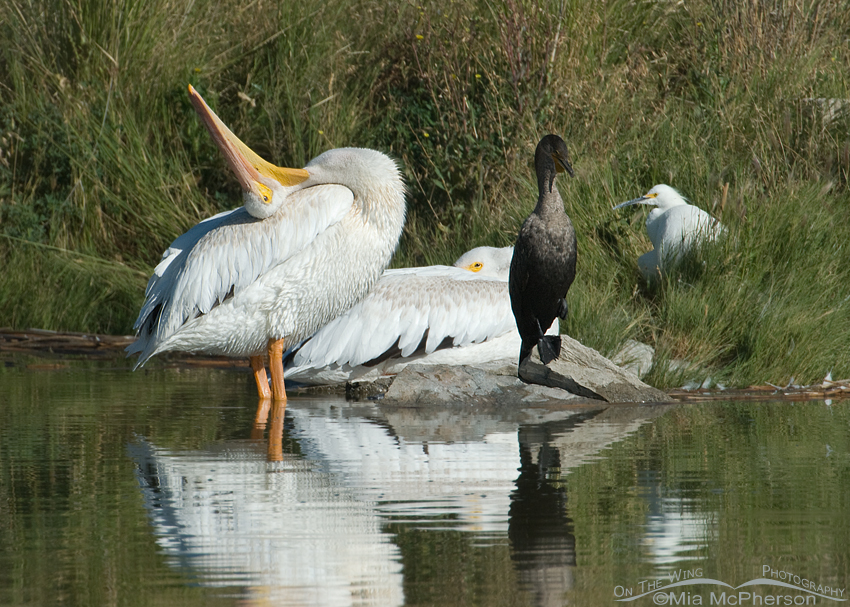 American White Pelican rubbing its head on its back – D200, f9, 1/1000, ISO 400, EV -0.3, 200-400mm VR with 1.4x TC at 400mm, natural light
American White Pelican rubbing its head on its back – D200, f9, 1/1000, ISO 400, EV -0.3, 200-400mm VR with 1.4x TC at 400mm, natural light
The pelican was rubbing its head and neck across its back. For some reason this pose reminds me of Sandhill Cranes when they are displaying.
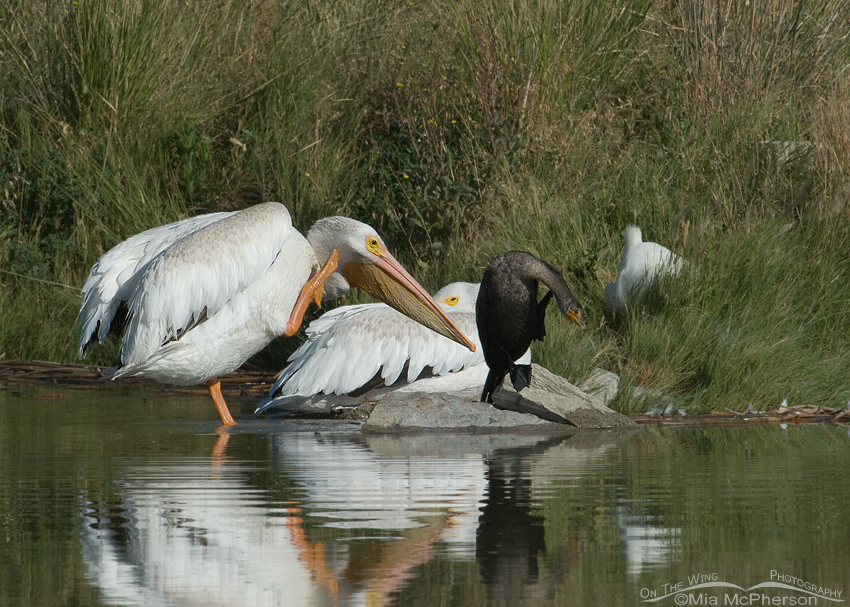 American White Pelican and Double-crested Cormorant scratching – D200, f13, 1/640, ISO 400, EV -0.3, 200-400mm VR with 1.4x TC at 400mm, natural light
American White Pelican and Double-crested Cormorant scratching – D200, f13, 1/640, ISO 400, EV -0.3, 200-400mm VR with 1.4x TC at 400mm, natural light
An American White Pelican and Double-crested Cormorant were very close together on the shoreline, the cormorant seemed to take a cue from the pelican and began scratching not long after the pelican. Maybe it is like the effect where one person yawns and soon other people surrounding them begin to yawn too, I am not sure.
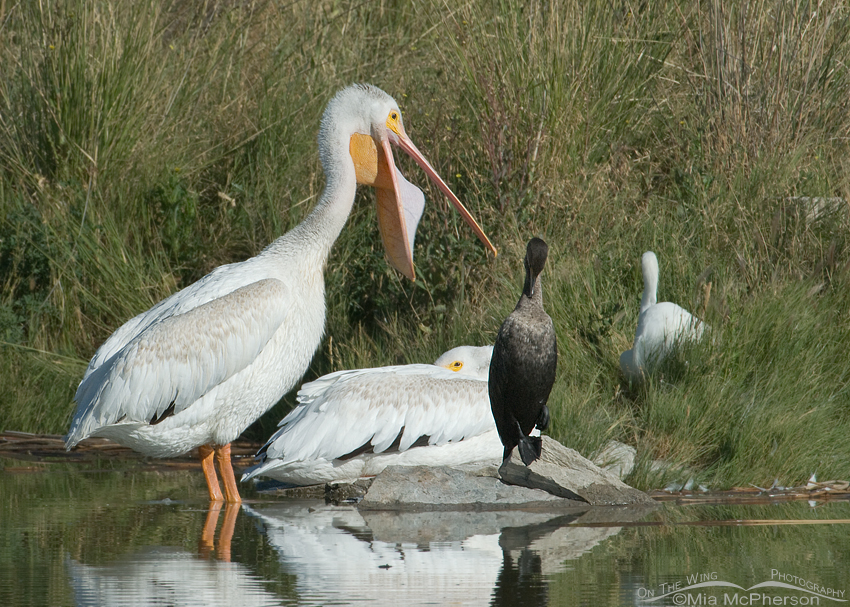 American White Pelican cleaning bill #1 – D200, f13, 1/640, ISO 400, EV -0.3, 200-400mm VR with 1.4x TC at 400mm, natural light
American White Pelican cleaning bill #1 – D200, f13, 1/640, ISO 400, EV -0.3, 200-400mm VR with 1.4x TC at 400mm, natural light
The pelican began to shakes its pouch vigorously up and down, according to BNA (a pay site) this behavior is probably to rid the pouch or bill of debris. It sure seemed to me like this pelican was trying to very hard to do just that!
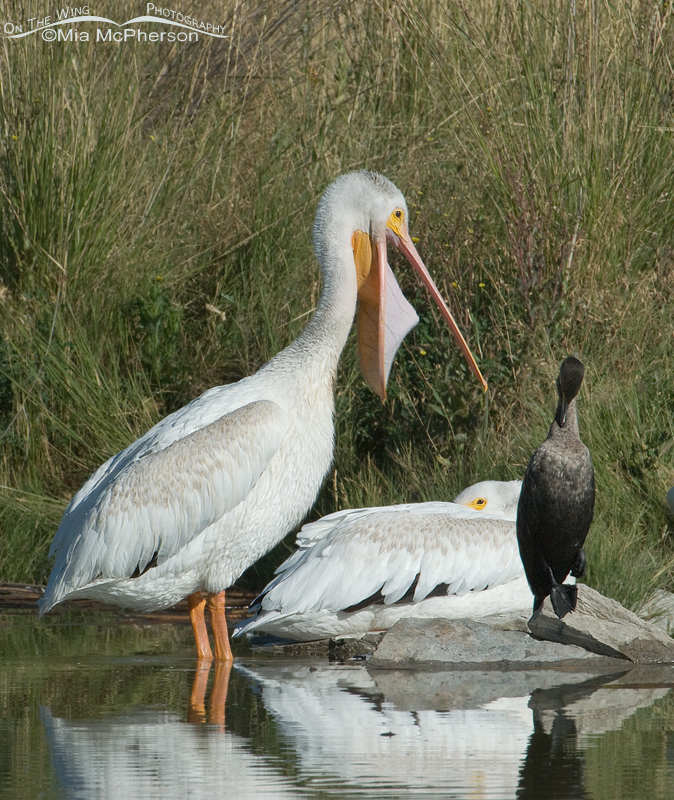 American White Pelican cleaning bill #3 – D200, f13, 1/640, ISO 400, EV -0.3, 200-400mm VR with 1.4x TC at 400mm, natural light
American White Pelican cleaning bill #3 – D200, f13, 1/640, ISO 400, EV -0.3, 200-400mm VR with 1.4x TC at 400mm, natural light
Here the pouch of the pelican is being pushed towards the upper mandible and appears to be inside out.
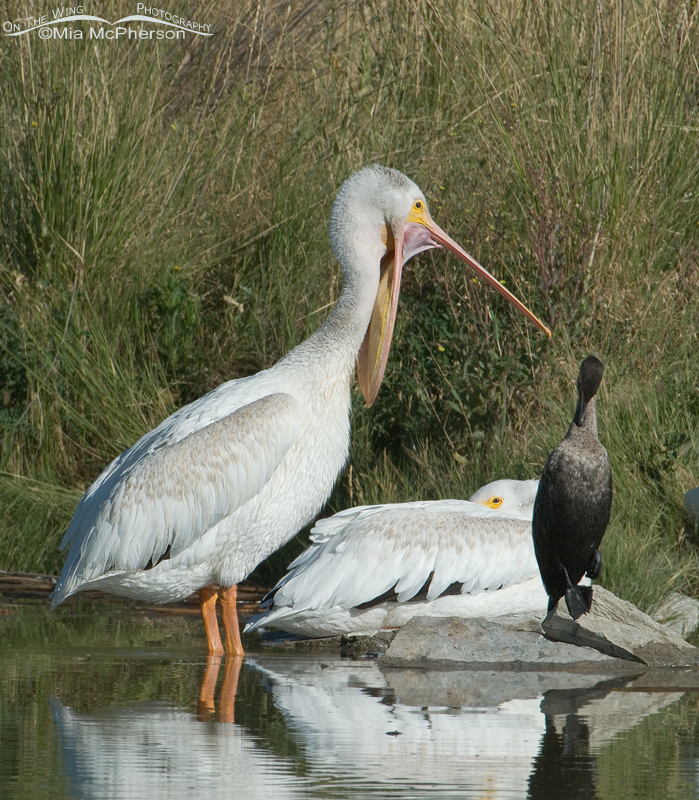 American White Pelican with bill open wide – D200, f13, 1/640, ISO 400, EV -0.3, 200-400mm VR with 1.4x TC at 400mm, natural light
American White Pelican with bill open wide – D200, f13, 1/640, ISO 400, EV -0.3, 200-400mm VR with 1.4x TC at 400mm, natural light
I’m not sure the pelican can open its bill much wider than this photo shows. It makes my jaw ache to even think about opening my jaw that wide.
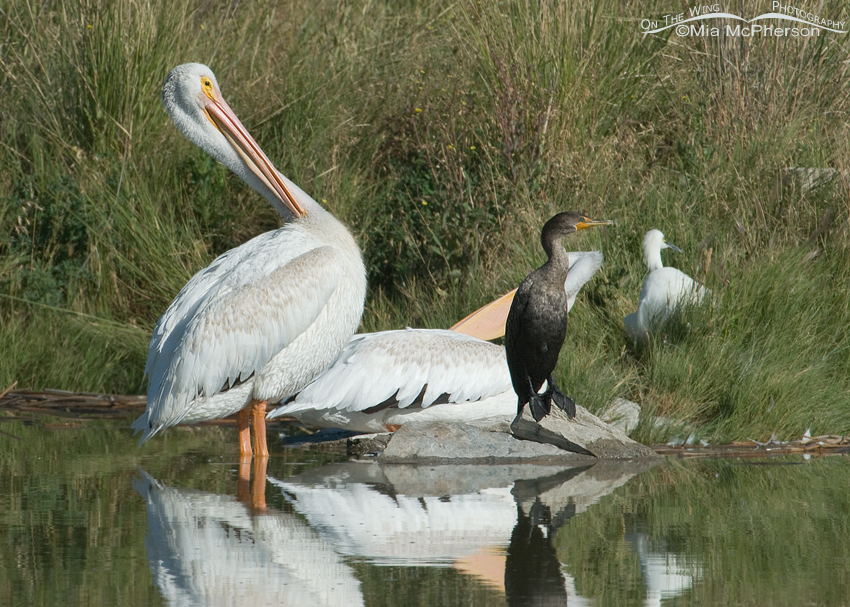 American White Pelican scratching its neck – D200, f13, 1/500, ISO 400, EV -0.3, 200-400mm VR with 1.4x TC at 400mm, natural light
American White Pelican scratching its neck – D200, f13, 1/500, ISO 400, EV -0.3, 200-400mm VR with 1.4x TC at 400mm, natural light
The pelican stretches its neck to be able to preen the neck feathers with the bill.
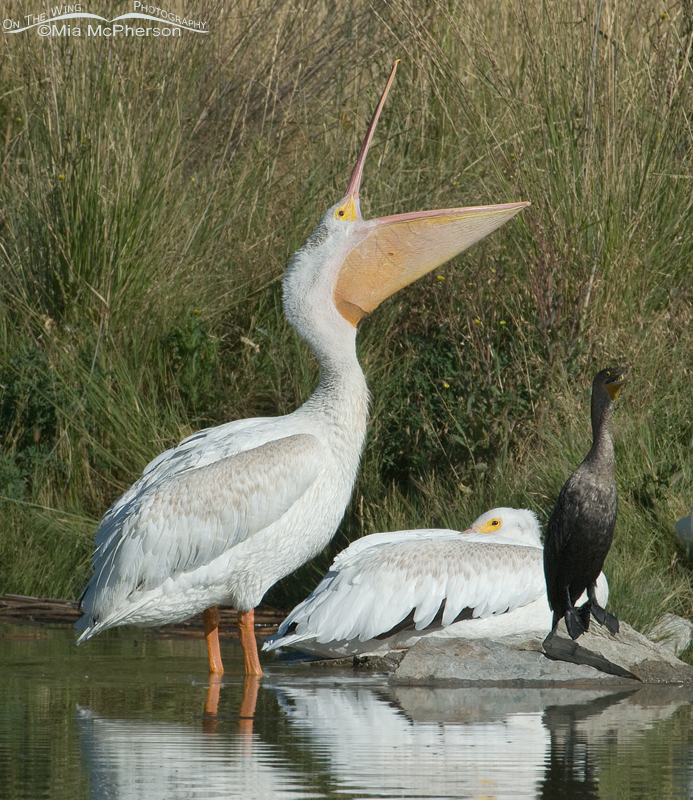 American White Pelican opening its bill – D200, f13, 1/640, ISO 400, EV -0.3, 200-400mm VR with 1.4x TC at 400mm, natural light
American White Pelican opening its bill – D200, f13, 1/640, ISO 400, EV -0.3, 200-400mm VR with 1.4x TC at 400mm, natural light
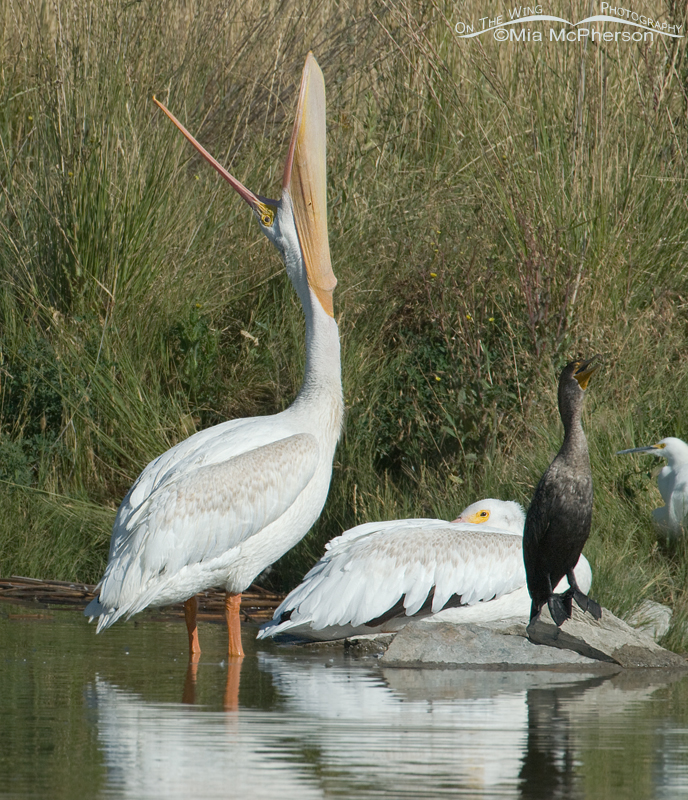 American White Pelican saying Ah! – D200, f11, 1/750, ISO 400, EV -0.3, 200-400mm VR with 1.4x TC at 400mm, natural light
American White Pelican saying Ah! – D200, f11, 1/750, ISO 400, EV -0.3, 200-400mm VR with 1.4x TC at 400mm, natural light
Just before leaving these birds the pelican threw back its head and opened its bill wide, perhaps it was attempting to catch a flying fish? Just kidding!
The American White Pelican is unmistakable with its huge wing span, black and white coloring and its distinctively large bill. These pelicans forage in flocks using their wings & bills to drive fish into shallow water. They are highly social and are often seen in large groups. They live primarily in the western part of North America but do winter further south, even as far south and east as Florida.
I was thrilled to get these behavior images today. I hope to see more of the American White Pelicans before they leave for the winter.
Life is good.
Mia
Click here to see more of my American White Pelican photos plus facts and information about this species.





I just did an article on the white pelican here in Central Oregon – and your pictures of them preening are fantastic!
I’m going to link to your pictures within my article – it is up as a finalist in the hubpages Facebook contest but my pictures pale compared to yours. These are just so beautiful!
Thanks Audrey, I find American White Pelicans to be fascinating birds and great subjects to photograph. Loved your article on them. I’ve sent you an email. Mia